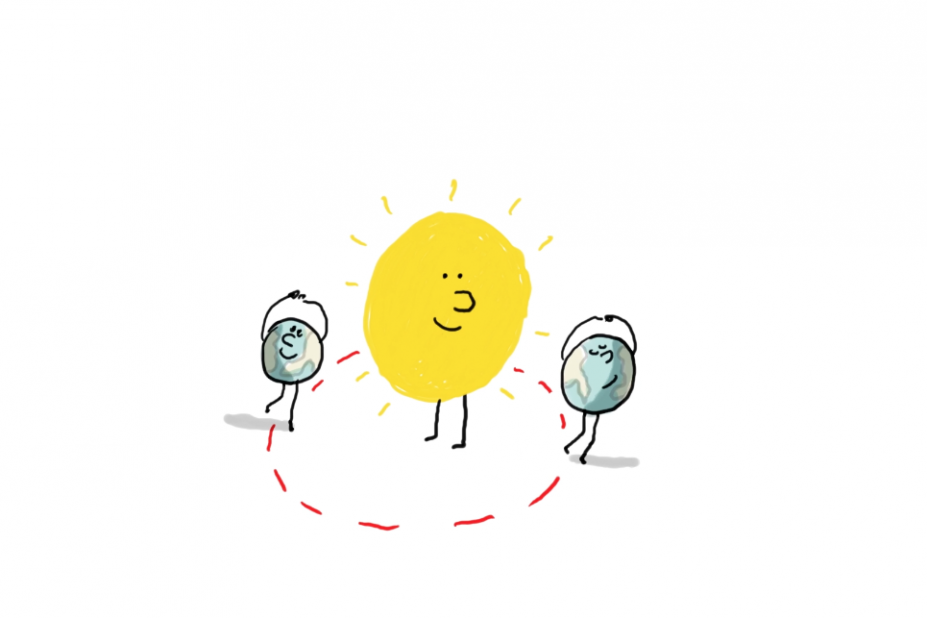The longest day of the year is around 21 June. There are about 16 hours between sunrise and sunset.
During the shortest day, around 21 December, the sun shines less than 9 hours!
These 2 extremes are called the summer solstice and the winter solstice. Between the 2, the days get shorter.
They get longer little by little until the following summer solstice, and so on.
But that’s true for countries in the northern hemisphere, like France, the USA or Japan.
On the equator, the days and nights are the same length all year long.
And at the poles, it’s dark 6 months in winter and light 6 months in summer!
To understand, imagine the Earth facing the sun. As you know, it spins around on itself every 24 hours. That’s what makes night and day.
If the Earth span perfectly straight, day and night would be the same everywhere: 12 hours.
But the Earth is tilted over! That means days are longer in one hemisphere than the other.
And as the Earth also goes around the Sun, the hemisphere that is lit up is not always the same throughout the year!
That’s why, when it’s summer in the northern hemisphere, it’s winter in the southern hemisphere, and vice versa.
So, if the days are getting longer where you live, they’re getting shorter elsewhere. That’s only fair!





 Retour
Retour